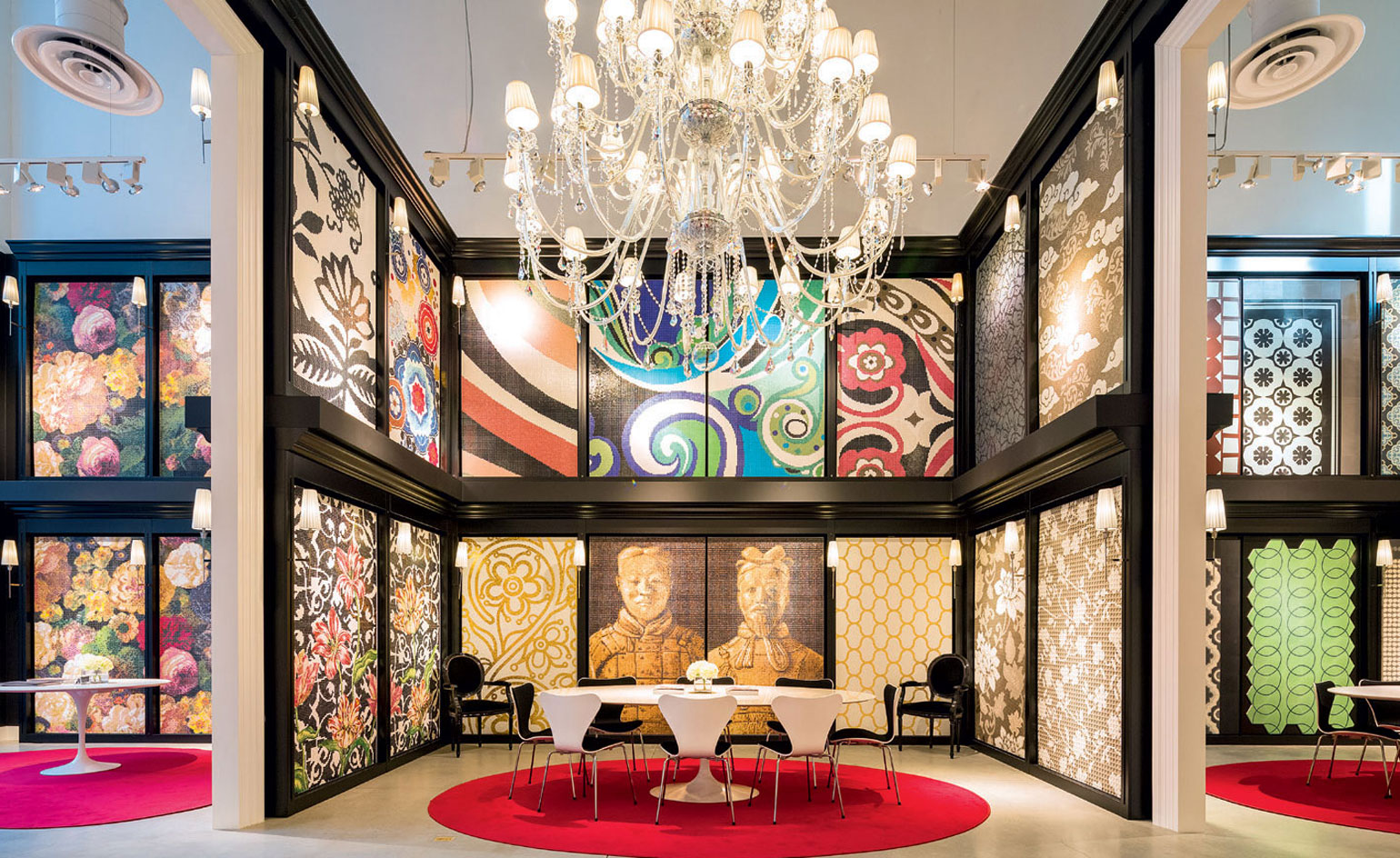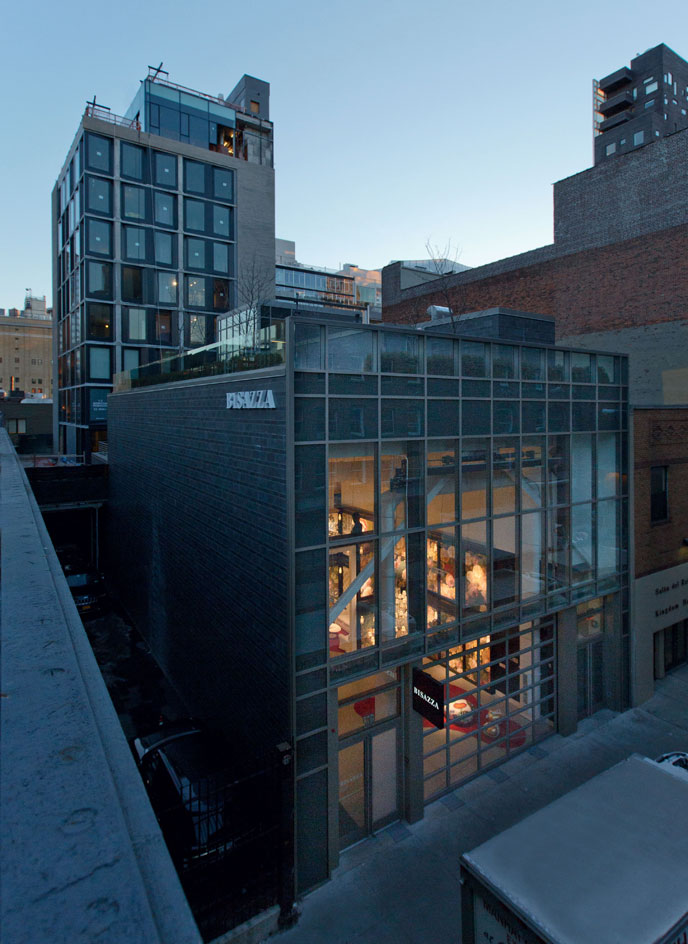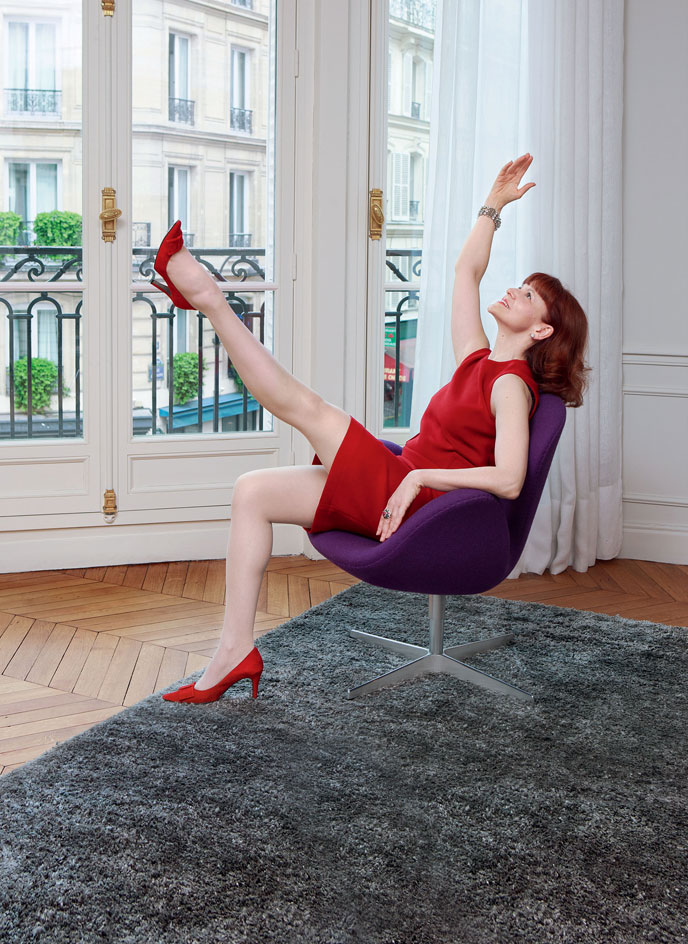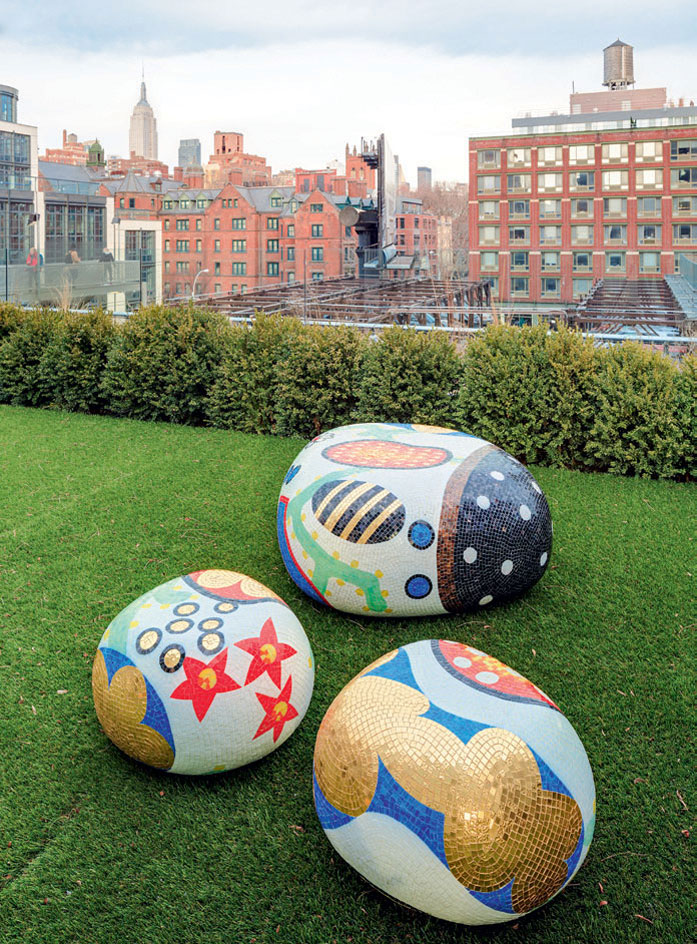High style: Bisazza unveils monumental new Chelsea flagship

Should you have thought New York’s Chelsea neighbourhood couldn’t possibly accommodate another fancy new resident, think again. After 12 years of being a fixture of Soho’s Greene Street, the Italian luxury brand Bisazza has uprooted its Manhattan showroom to join Chelsea’s plethora of designer residences and art galleries scattered along the High Line, and claim a piece of the district’s Hudson River view as its own.
Originally built as a sales office for the luxury condominium 500 West 21st Street, a 32-unit building designed by Kohn Pederson Fox one block away, Bisazza’s new home articulates the creative nature of its environs.
A glass-clad steel structure, the restrained two-storey building serves as an industrial backdrop for Bisazza’s vibrant tile collections. A double-height glazed facade means that the space is drenched in natural light, while soaring ceilings bestow it with a serene, gallery-like quality. ‘We needed a larger space to present all our new collections,’ explains Rossella Bisazza, director of communications and ambassador for the company that her father established back in 1956. ‘It was quite a long process, but we finally found a space that was just perfect for our needs. The Chelsea area is so dynamic and stimulating, and the fact that we are so close to the High Line is a plus.’
The 400 sq m Chelsea showroom is a glamorous fusion of contemporary architecture and Italian classicism. Designed with the help of architect Carlo Dal Bianco, who has collaborated with the mosaic tile specialist on its showrooms, corporate HQ, and eponymous art and design foundation in Vicenza, Italy, Bisazza’s New York flagship uses classical libraries from the Italian Renaissance as its primary design inspiration.
Elegant black-and-white wall partitions lined with traditional cornicing not only divide the building’s single volume into a series of separate spaces, but also act as a display for the brand’s bold, artistic offerings.
‘The space differs from all other Bisazza stores because of its monumentality,’ explains Bisazza. ‘Thanks to the exceptional height, it was possible to design our first double-height Bisazza library to fully present our collections. With its strong structure and personality, the library contains the explosion of colours that are present in Bisazza’s mosaic patterns.’
Ornate chandeliers hang over a central aisle created by the library’s walls, and stand in proud contrast to the exposed industrial pipes and vents that have been retained in the loft-like space. A large portion of the glass facade can be raised to expose the store to its surroundings – perfect for fair-weather soirées, including the space’s official opening during New York Design Week in May.
As visitors walk through the showroom, they are greeted by a succession of evocative vignettes. ‘The concept consists of a series of living environments, where all mosaic decorations, our furniture and bathroom collections are displayed,’ says Bisazza. From Jaime Hayon’s seductive bathroom collection, set against panels of the brand’s ceramic range, to Marcel Wanders’ whimsical mosaic-covered ottomans and tables, holding court by the main entrance, each setting provides a tangible sense of what having a bit of Bisazza in your life could be like. The entryway, which is currently installed with 20 panels of the floral motif ‘Bouquet’, will feature installations that will change seasonally.
New York is the first location to showcase the company’s new Cementiles collection, a take on the cement tiles that typically adorned palazzos and mansions at the turn of the 20th century. Featuring eye-catching designs by Paola Navone and Jaime Hayon, the large matte tiles are a counterpoint to Bisazza’s more lustrous specimens.
The part of Bisazza’s new home that really one-ups its neighbours, however, is its rooftop terrace. It is within spitting distance of the High Line, which rests on an elevated section of a disused railway spur. ‘Our building is the only one with a private, habitable area so close to the High Line,’ enthuses Bisazza. ‘We plan to use it for events and it can accommodate exhibitions.’
Landscaped with neatly manicured lawns and hedges, a monolithic grey slate wall and a stone slab path, the terrace is not dissimilar to the entrance of the Bisazza Foundation. Bisazza explains that the thread connecting all the company’s activities, commercial and cultural, is ‘a passion for design and the collaboration with internationally renowned designers. The Foundation’s activities have promoted Bisazza as a company that produces and promotes culture, not just a product,’ she continues. ‘In regards to the New York showroom, we certainly think that some pieces of the Foundation might be put on display there in the future.’
Bisazza’s sensitive approach has created a unique home that takes heed of Chelsea’s creative and historic facets. We’ll be the first to say, ‘Welcome to the neighbourhood.’
Originally printed in the June 2015 edition of Wallpaper* (W*195)

Bisazza’s new Chelsea showroom.

The company’s Rossella Bisazza at her Paris home.

Marcel Wanders-designed ottomans/coffee tables in the store’s rooftop garden.
ADDRESS
Bisazza
508 West 20th Street
New York, 10011
Wallpaper* Newsletter
Receive our daily digest of inspiration, escapism and design stories from around the world direct to your inbox.
Pei-Ru Keh is a former US Editor at Wallpaper*. Born and raised in Singapore, she has been a New Yorker since 2013. Pei-Ru held various titles at Wallpaper* between 2007 and 2023. She reports on design, tech, art, architecture, fashion, beauty and lifestyle happenings in the United States, both in print and digitally. Pei-Ru took a key role in championing diversity and representation within Wallpaper's content pillars, actively seeking out stories that reflect a wide range of perspectives. She lives in Brooklyn with her husband and two children, and is currently learning how to drive.
-
 All-In is the Paris-based label making full-force fashion for main character dressing
All-In is the Paris-based label making full-force fashion for main character dressingPart of our monthly Uprising series, Wallpaper* meets Benjamin Barron and Bror August Vestbø of All-In, the LVMH Prize-nominated label which bases its collections on a riotous cast of characters – real and imagined
By Orla Brennan
-
 Maserati joins forces with Giorgetti for a turbo-charged relationship
Maserati joins forces with Giorgetti for a turbo-charged relationshipAnnouncing their marriage during Milan Design Week, the brands unveiled a collection, a car and a long term commitment
By Hugo Macdonald
-
 Through an innovative new training program, Poltrona Frau aims to safeguard Italian craft
Through an innovative new training program, Poltrona Frau aims to safeguard Italian craftThe heritage furniture manufacturer is training a new generation of leather artisans
By Cristina Kiran Piotti